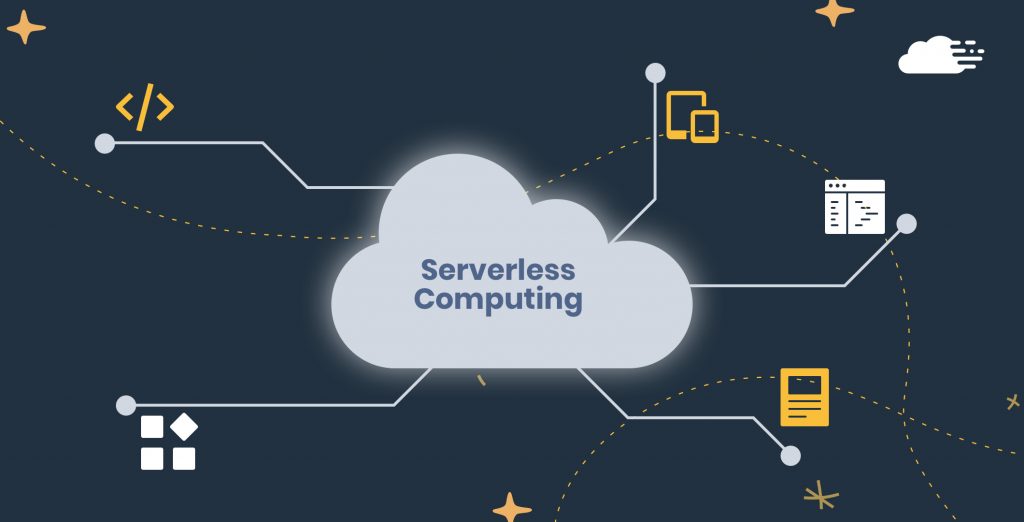
Serverless Computing Explained: Exploring the Ecosystem
Despite being relatively new in the tech scene, serverless computing is quickly gaining popularity among developers. As its name suggests, this model allows you to build and operate apps without managing servers. Technically, servers are still involved, but cloud providers handle all the backend work so that app developers do not have to.
Given this premise, it is not a surprise that serverless computing has caught the attention of many players in the tech industry. It is an exciting advancement and can potentially revolutionise how tech businesses operate, primarily since serverless adoption has grown exponentially in the past few years.
To better understand this disruptive innovation, this blog explores serverless computing and what’s worth knowing about it.
What Is Serverless Computing?
Serverless computing is a computing model that automatically allocates resources needed to run an application and scales these accordingly based on demand. As a result, you can develop and use applications without thinking about servers since management tasks like provisioning, patching, scaling, load balancing, and logging are offloaded to the cloud provider.
The term “serverless” can be attributed to the customer experience rather than the actual computing model. While there are still physical servers running in the background, they are not visible to users or customers since they do not need to manage infrastructure. They can focus on writing and organising code without worrying about the backend server.
Given the increased interest in agile software ecosystems, serverless computing has undoubtedly taken off and is gaining more traction in recent years. As a result, the model is revolutionising industries, so major tech corporations have already jumped on the bandwagon. For example, some major serverless computing providers today include Amazons AWS, Microsoft Azure, and Google Cloud.
Serverless vs. Function-as-a-Service
Serverless computing and function-as-a-service (FaaS) are often interchangeable but not necessarily the same. Putting it simply, FaaS is a subset of serverless computing. It allows you to write small and modular pieces of code in response to events on the network edge, so you can quickly scale your codebase without maintaining the backend.
Another way of looking at it is that serverless encompasses any service category where operational tasks related to servers are invisible to the end-users. Then, part of this broad field is FaaS, a critical process involving running codes to respond to events or requests.
Advantages of Serverless Computing
Serverless adoption has increased exponentially as more organsations see the value in adopting this model. In 2018, less than 5% of global enterprises deployed server computing technologies. However, this number has since grown so much that the serverless computing market is expected to grow at a CAGR of 23.17% from 2021 to 2026.
To better understand why the serverless revolution is going strong, check out the main advantages of serverless computing below.
Increased Focus
One of the main advantages of serverless computing is that you can focus on writing code instead of performing routine backend tasks since you do not have to manage the infrastructure. As a result, it gives you more free time, which you can use to focus more on developing apps without worrying about how to run or maintain them. As a result, you can create better products and deliver more value to users.
Increased Agility
Aside from increased focus, increased agility is another huge benefit for developers. With serverless computing, you only need to write the code and hand over the rest of infrastructure setup and management effort to your chosen provider. It contrasts with the traditional workflow, where you still have to manage the server, take care of data storage, and do other things to keep it up, reliable, and secure. In effect, you can deploy applications more quickly with a serverless platform.
Flexible Pay-As-You-Go Model
Another main attractive point of serverless computing is its flexible payment scheme, which allows you to maintain cost-effective operations. Serverless platforms operate on a pay-as-you-go model, which means you only pay based on how much computation you require. In other words, you only pay for whatever resources you need to run your applications and only when they are running.
This setup differs significantly from traditional models, where you need to pay for server capacities even if they are not in use. Companies often buy enough capacity to handle peak loads, but this usually results in idle time. With serverless computing, you only consume resources and pay for them when needed, ultimately maximising your budget.
Easy Scalability
Finally, serverless computing allows you to scale your capacity up or down in seconds. Whether you need to increase your ability to support higher loads or close down servers due to lower traffic, you can easily do this through your provider. This scalability ensures that you can focus on app development and ensure you have enough resources on the backend.
Exploring the Serverless Ecosystem
Now that you understand how serverless computing works, you might be considering your options. To help you with this, here is a quick glimpse of the overall serverless ecosystem.
- Serverless Platforms: If you are new to the serverless ecosystem, the quickest way to enter the space will be to select one of the top providers. Common options include Amazons AWS, Microsoft Azure, Google Cloud Platform, and IBM Bluemix.
- Frameworks and Tools: If you are looking for additional capabilities with your chosen platform, you can explore different serverless frameworks and tools. A popular option is the Serverless Framework.
- Security: Serverless applications require more advanced security features to get a specialised security platform for extra protection. Some examples include Snyk, Aqua, Twistlock, and Docker-Lambda, which allow you to maximise the security of your serverless apps.
Overall, serverless computing is transforming a variety of industries, providing developers with a flexible, cost-effective, and scalable solution to building and running apps. While this model is still developing, it is undoubtedly evolving as more organisations migrate from traditional application hosting to adopt it. As a result, you can expect providers to develop more features to address opportunities with serverless apps.





